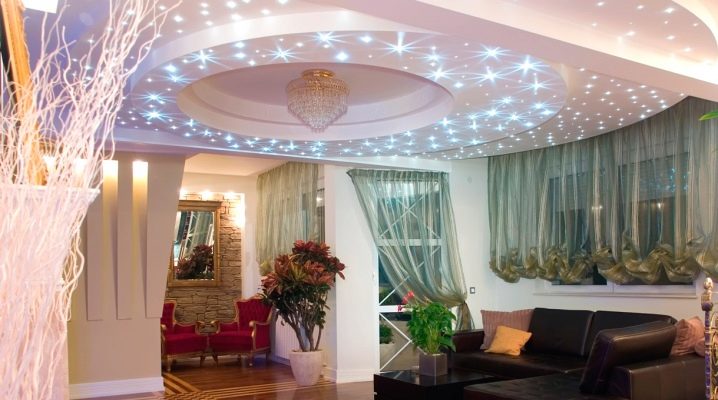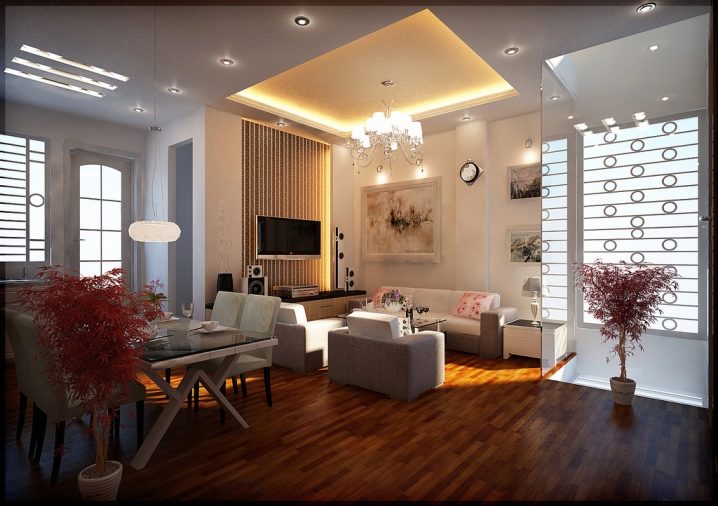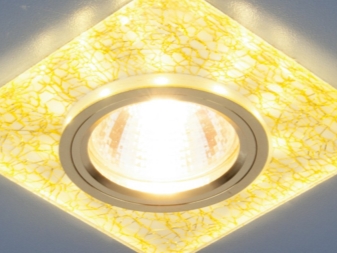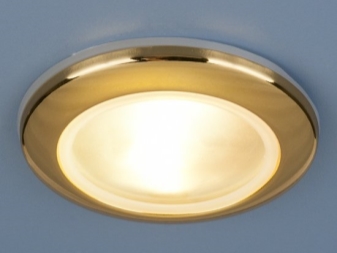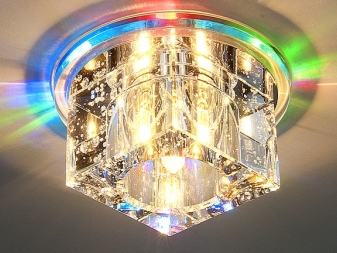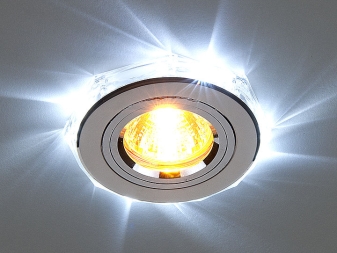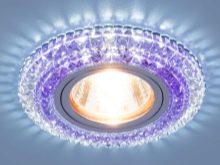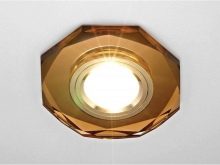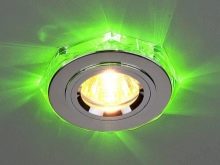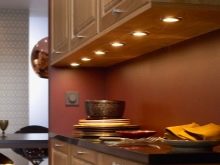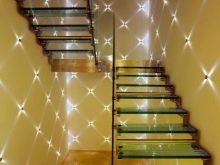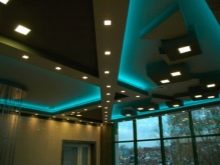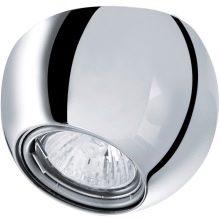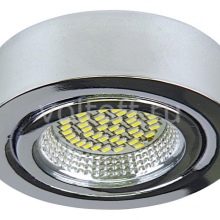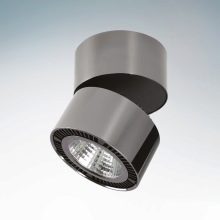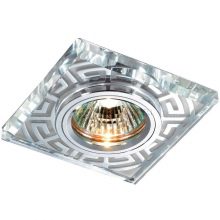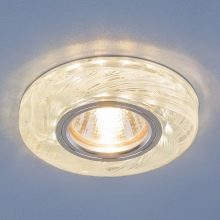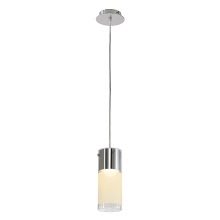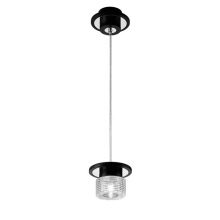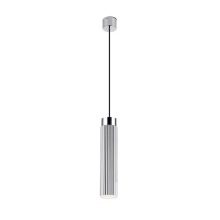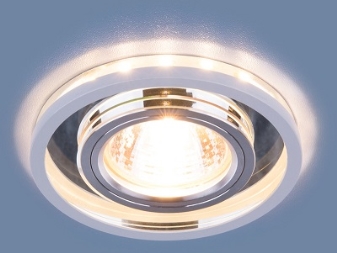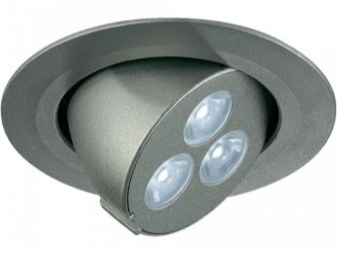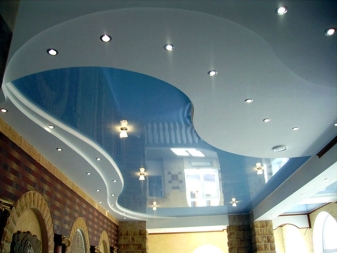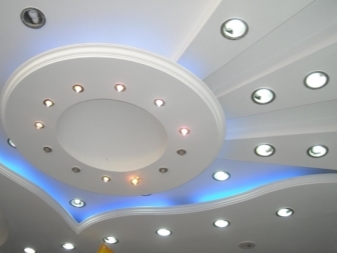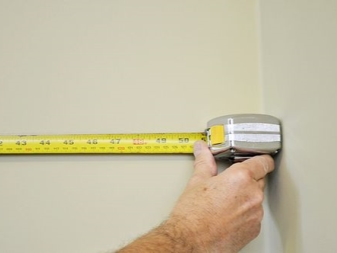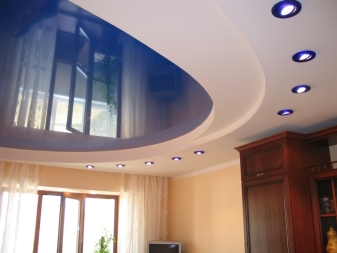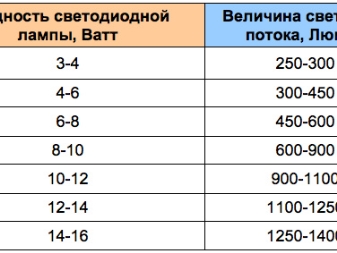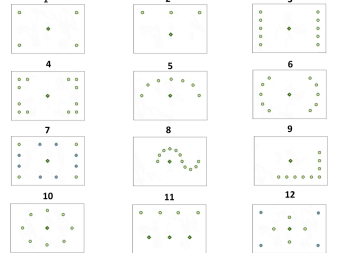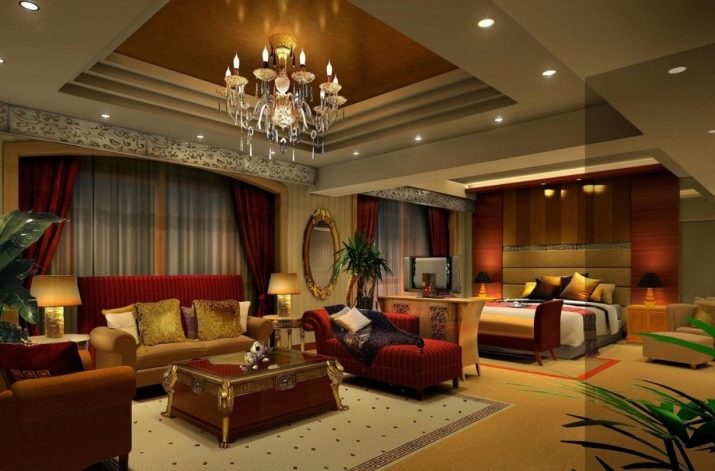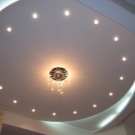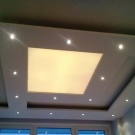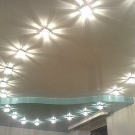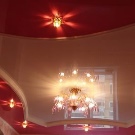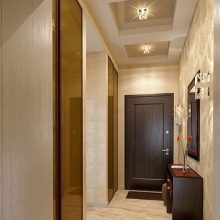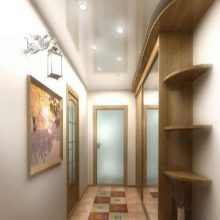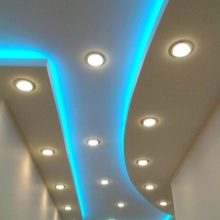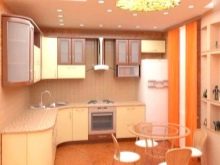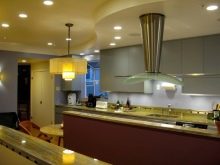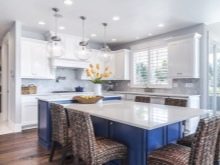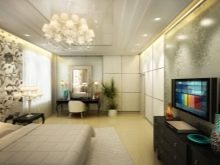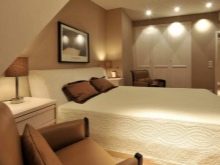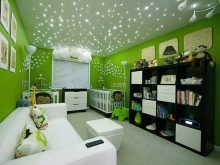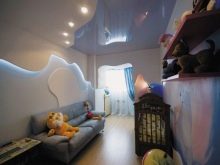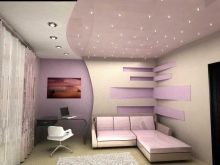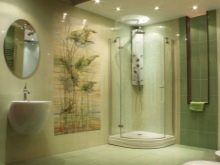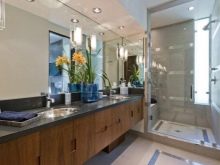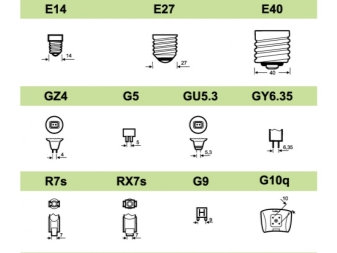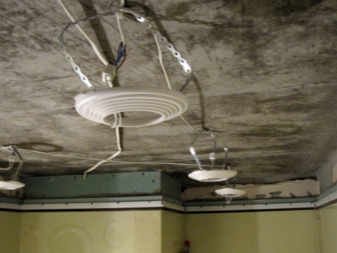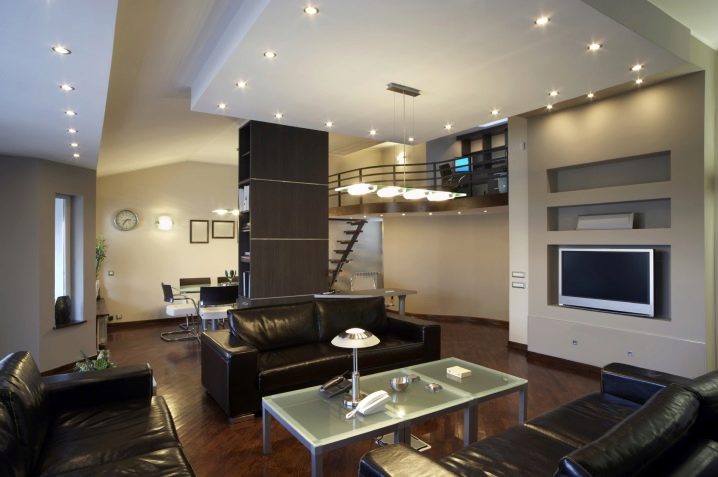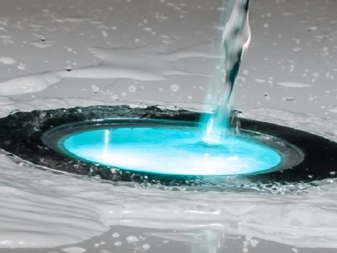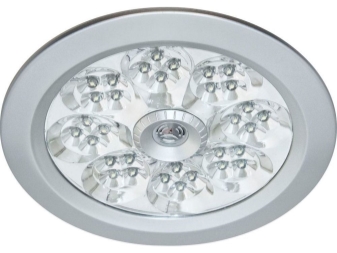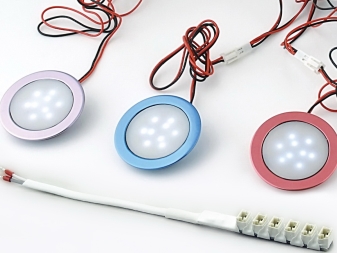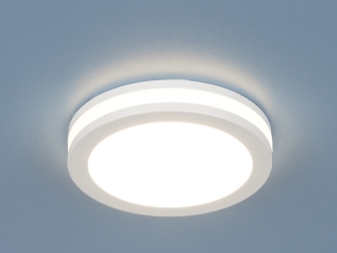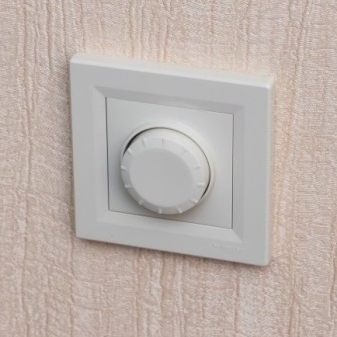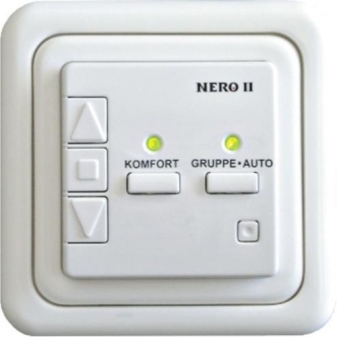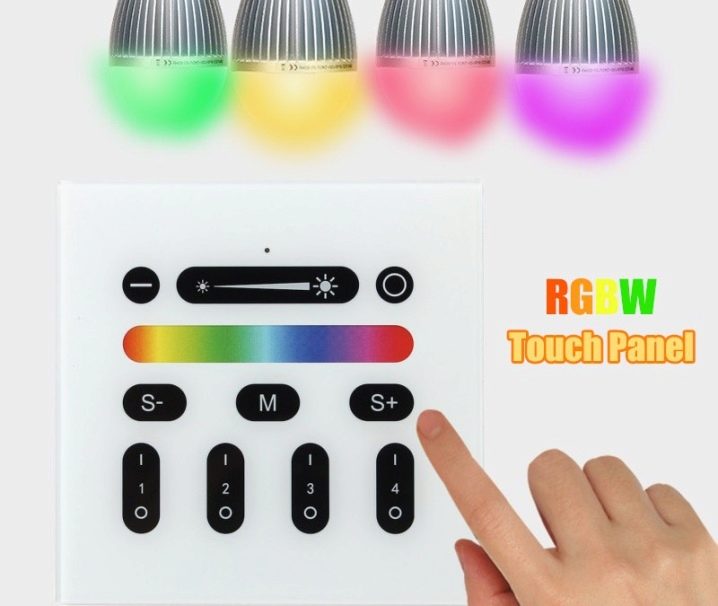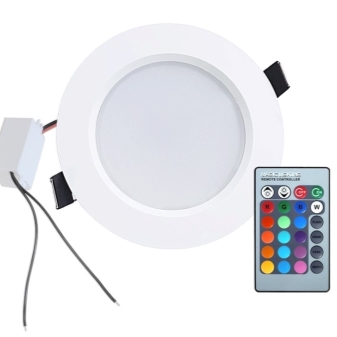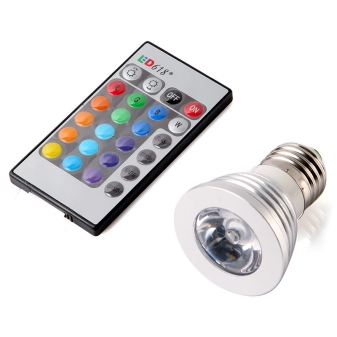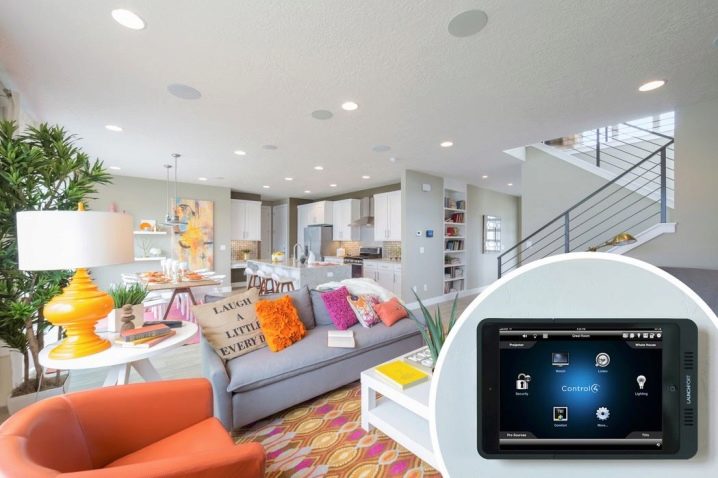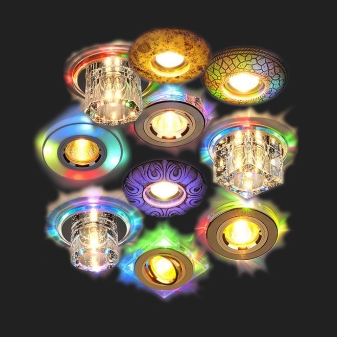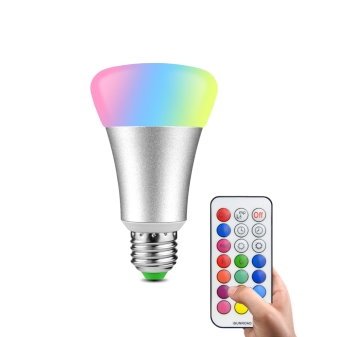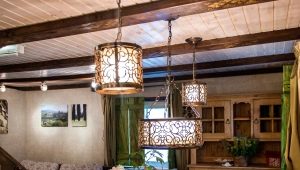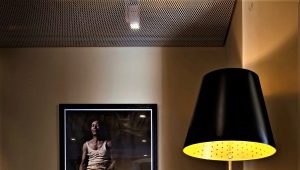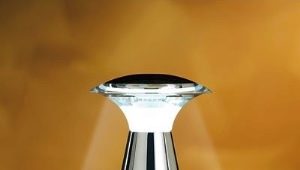LED spotlights
Beautiful and high-quality lighting is the basis of healthy eyes and good mood. But it often happens that the chandelier gives a small angle of light, so the LED spotlights will come to the rescue, which will be an excellent additional lighting in the room.
What are they?
It can be concluded from the very name of the LED luminaire that it consists of two important components, namely, a semiconductor LED and a power supply unit - a driver, thanks to which the alternating current becomes constant. Also, the generated light spectrum may vary depending on the qualitative composition of the semiconductor (chemical composition).
Such a LE-lamp appeared in stores relatively recently, but today it is actively used for lighting in almost all rooms, be it an office, gallery or bedroom. They provide a high-quality stream of light without ripples and interruptions, which has a good effect on the state of the eyes of people in a room with such lighting.
Advantages and disadvantages
Like all bulbs, LED lamps have their pros and cons.
Benefits:
- One of the most important advantages is low power consumption, thanks to such a lamp you can save on electricity.
- The light bulb turns on quickly and immediately gives a good stream of light, no need to wait until it warms up and “flares up”.
- Also, these bulbs are considered to be environmentally friendly and safe for humans, unlike ultraviolet lamps or energy-saving, in which there are mercury vapors.
- Due to their design, they practically do not heat the body, respectively, and the material in which they are embedded.
- Dot LED lamps will delight their performance. One lamp can last up to 9 years.
- The weight of the lamp is insignificant, which facilitates its installation.
It is impossible to single out the drawbacks, since there are no significant shortcomings, except for the price. Such lamps will cost a bit more expensive than ordinary ones, but the price justifies the quality.
Scope of application
Due to its characteristics, diode spotlights have a wide range of applications. They can be used as the main lighting, as well as background or additional lighting in the room.The most interesting thing is that such lamps can be hung not only on the ceiling, but also used as a decorative lighting element. For example, in hotels, offices or private homes install mini LED lights directly into the corners of the stairs so that it is comfortable to move around it in the evening or at night.
Very often, these lighting devices are also used for furniture. Furniture lighting is most often used in greenhouses, museums, large offices or in modern home furnishings.
Species
LED spotlights can be divided into three main groups according to their type of attachment:
Overhead
From the very name you can understand that the lamps are superimposed on the surface. This type of installation is suitable for concrete ceilings, stretch or plasterboard. It turns out that the fastening is done not to the canvas itself, but under it - directly on the fasteners in the ceiling.
Embedded
Such built-in lights look very carefully on the mounted surface. Their body is completely or partially hidden in the surface of the ceiling, walls, floor or furniture. Thus, it seems to merge with the surface.
Suspended
The difference between such spotlights is that they have 2 enclosures that are separated from each other for a certain distance by an electric, decorated power cable. In one part there is a cartridge in which the bulb is screwed, and the other part is a fixing. Sometimes these lamps have a hook, for which they are hung from the ceiling, or, if the weight allows, they are mounted as overhead or recessed lamps.
Design features
By their design, spotlights can be attributed to two groups: rotary and static (fixed).
Static lights after their installation on the ceiling or any other surface can shine only in one particular direction - forward. As for the rotary, then the lamp is divided into the body and the movable part in which the light bulb is located. They can be rotated or tilted by 30-40 degrees, which will allow to highlight a certain object with light or to illuminate the desired space.
How to calculate the amount to illuminate the room?
If the spotlights are chosen as the main type of lighting, without additional chandeliers or sconces, then you must first calculate their required number so that the room is bright and cozy.
Each room has a certain rate of lighting, which will be as comfortable as possible for the eyes and the perception of light in general. It is calculated from the square and the height of the ceiling. For example, for 1 m2 of a bedroom with a ceiling height of 2.5 m you need about 200 - 250 lux. In the living room or hall, the lighting should be brighter - 400 - 450 lux per 1 m2.
If the room has non-standard ceilings and they are 1-1.5 m higher, then accordingly, it is necessary to increase the level of light by 1.5 times.
Each LED lamp has on the box a description of its characteristics, namely the exact amount of the emitted glow. The more power is indicated (6 W or 10 W), the brighter the light will shine. Thanks to this, you can find out the required figure - the number of lamps per square meter.
The first thing to do is calculate the ceiling area (multiply the length by the width, for example, if the width is 4 m and the length is 5, then the area will be 20 m2). Then, according to the building codes, we learn the mandatory minimum illumination of the room.
Next, we substitute everything in the formula - N = (S * L) / P.
Where: N - The required number of fixtures; S is the ceiling area; L - Required number of suites in the room; P - The number of lumens produced by a single LED light bulb.
For example, if the bedroom has a ceiling area of 16 m2, the lighting should be about 200 suites, and the light bulb was chosen for 800 suites, then it turns out that you need to purchase 4 spotlights. You can take less powerful light bulbs - 400 suites, but then you need more lamps - 8 pieces.
Possible layouts
Before installing spotlights, it is necessary to draw an approximate drawing on paper, so it will be easier to make holes on a stretch or hypocardboard ceiling.
Also worth considering a few basic rules for the placement of lamps. First, they must be at least 20-30 centimeters from the wall. Secondly, if in addition to spotlights, a chandelier will also be used, then it should be placed in the center of the room or closer to the working area in space, and the spotlights will be an additional light.
There are several standard schemes for the location of spotlights, they can be:
- Oval shape;
- In the form of a circle or concentric circles;
- In the form of a semicircle on opposite corners of the room;
- Rectangular or square (it all depends on the shape of the room);
- Arrangement in the form of a cross;
- In the form of an arc starting from the middle of the room;
- Placing equidistant waves.
Schemes can be combined and create thereby unusual room lighting solutions.
Each room has its own purpose and features, therefore for each room the layout of the spotlights will be different:
- In the corridor, it is better to place the spotlights with a straight line in the center or a pair opposite each other, since often the corridor room is narrow and elongated.
- In the kitchen, you can combine basic forms or make zoning space. For example, lay out a circle above the dining area, and above the working kitchen surface, line up spotlights in order to have enough lighting at the time of cooking.
- The bedroom will look beautiful wave or circular placement of lamps, and you can select only the area where the bed is located, since a particularly bright lighting in the bedroom is not required.
- In the nursery, very often create the effect of the night sky with the help of small LED lamps. You can also make a curly display in the form of curls of a snail or cat face.
- As for the bathroom, it is preferable to lay out the lamps around the perimeter and install them a little in the center or install them in a semicircle from opposite corners.
Types of cartridge
Each lamp, regardless of design and form, has a cartridge - this is the place where the light bulb is screwed in or attached. Accordingly, for each cartridge there is a certain kind of base. For convenience of designation, people have invented alphanumeric designation of the type of base. The first capital Latin letter indicates its type, the second its subtype, and the third lowercase indicates the number of contacts.
Allot a pin base (B), on the thread (E), focusing (P), pin (G) and soffit (S). For example, if it is indicated on the package of GU10, it means that this lightbulb has a pin holder with a distance between the pins of 10 mm. The most common are plinths on the thread and with pin mounting. Such bulbs are easy to insert and remove from the cartridge.
Features of fastening in various types of ceilings
Before installing the LED spotlights, it is necessary to clarify all the nuances, namely the features of the ceiling and its tension material (if any).
Perhaps the most whimsical is the stretch ceiling, since you need to choose a spot light with a small capacity, otherwise there is a risk that the PVC coating will melt in the fixing points of the lamps. To do this, on the ground of the future installation of the lamp, a special heat shrinkable ring is glued, which will not allow the material to creep and melt.
It is worth considering the fact that the more lamps will be installed, the lower the ceiling height will be, since when fastening the tension fabric sags and drops a little.
If the ceiling is made of drywall, then there are no special difficulties and rules for installation. The main thing is to correctly calculate the places for future spotlights and correctly choose the size of the bit for drilling. Otherwise, it is likely that the hole will be too large for the selected lamps and they will just fall out.
Additional nuances
Before you buy LED lamps, you need to decide in which room they will be installed. Their quality and service life depend on it.
If they are mounted in the bathroom or in the kitchen above the hob, the body must be waterproof.Such models are distinguished by the fact that all the parts are rubberized, the case is airtight, and all the parts fit snugly together, preventing the moisture vapor from penetrating inside the structure.
Also an additional feature for point lights may be the presence of a motion sensor. Thanks to the built-in infrared device, the lamp turns on when someone enters the room or starts moving. In the absence of movement in the room, the lamp is turned off after a certain period of time, which, by the way, can also be independently installed.
Such a function is useful because a lamp with a sensor saves electricity (if, for example, a person left and forgot to turn off the light). Also, you do not need to touch the switch every time, you just have to enter the room, and the light will turn on automatically.
Dimming
Another nice addition is the installation of a dimmer - an electronic device that controls the voltage in the light bulb, thus making it possible to adjust the level of illumination in the room. Dimmable LED lights are very convenient and practical for the following reasons:
- You can independently set the brightness parameters of the flow of light in the room;
- Allows you to save on electricity;
- Helps to create the right atmosphere in the room.
Dimmers are divided into 3 groups according to the principle of control:
- Mechanical. It looks like a switch mounted in the wall, only instead of a button there is a wheel, rotating which changes the brightness of the lighting in the room. Very simple and practical to use.
- On touch control. This design is slightly complicated by the presence of a touchscreen display, which is also attached to the wall. To change the luminous flux, you need to touch the touch panel and click on the desired power. As a rule, this option is more expensive than mechanical, but it looks very nice and concise.
- On the remote control. The principle of operation of this model is very simple. With the help of a special remote that works by radio or infrared rays, you can set the necessary parameters on a dimmer. This is very convenient, because you do not have to get up and press the control panel.
Recently, another type of control has emerged that is most often found in smart homes. The principle of operation is based on the work of the wi-fi signal.That is, you can remotely set up the required parameters via the Internet, and when you arrive home, enjoy pleasant lighting. Not all LED bulbs are suitable for this function.
It is important that the luminaire has a special driver for the dimmer, otherwise the use of unregulated light bulbs can lead to failure of the entire system or short circuit.
Variety of design
Today, the lighting market can provide a wide variety of LED spotlights. They can have a different shape, texture, material and color.
In shape, they can be round, square, triangular or asymmetrical, it all depends on the preferences of the buyer. Also, lamps and differ in the location of the bulb itself inside it. It can be built-in or protruding. Masters are advised to choose the second location option, since the angle of illumination will be greater. As for the material, the body can be made of metal, plastic, glass or plaster.
The color palette is also varied both in the case and in the emitted light flux. Standard colors are black, white, gold, silver and chrome, but over time the palette has expanded and you can find lamps with an ornament or pattern on the body.
Review of LED lamps under the spotlight, see the following video.
